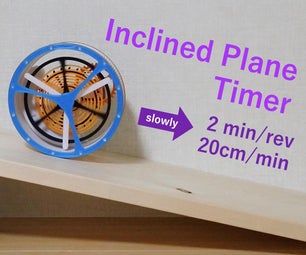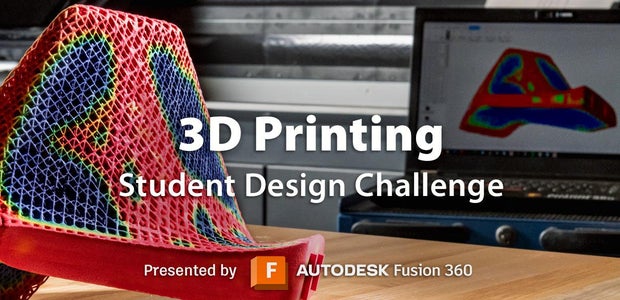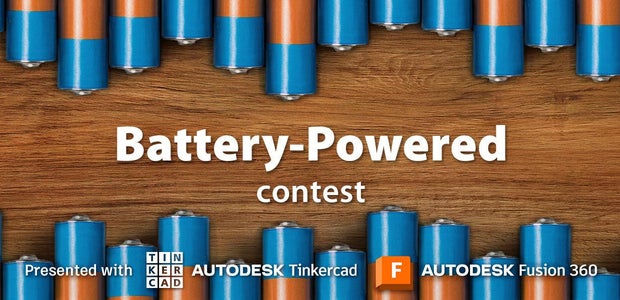Introduction: DIY SMT Hotplate Project
Hey Everyone what's up!
So this is my "DIY SMT Reflow Iron" made from Cloth Iron Element screwed onto a thick copper plate to transfer heat for achieving the desired heating which would be the correct melting temperature of Solder paste (which is in my case 270°C)
The goal for making this DIY SMT Reflow was simple, it's easy and cheaper to make a working SMT Reflow Hotplate instead of buying a proper hotplate.
Video-
Supplies
- Iron's Element 700W-1000W (I'm Reusing this from an OLD Iron)
- Copper plate 150mm x 250mm x 2.2mm
- Wooden Board 460mm x 380mm x 20mm
- M4 Screws 50mm Length
- M4 Bolts
- AC Cord
- ESD Mat 145mm x 345mm
The rest of the parts are for Preparing the Temperature sensor.
- PCB (Which was Provided by JLCPCB)
- OLED Display SSD1306
- Atmega328PU
- 16MHz Crystal
- 22pF Cap 0603 Package
- 10K Resistance 0805
- NTC 10K
- 5V 1A Charger Circuit
- 3D Printed Enclosure/BOX
- Potting Compound (Epoxy and Hardener)
- Teflon wires RED, Black, White
- PCB for Reflow
- Solder paste
- Arduino as ISP Programmer setup
Step 1: Little About Solder Paste
The Melting Temperature of solder paste depends on the Flux percentage and the ratio of Sn-Pb which in my case is 63/37, Sn63-Pb37.
Sn-Pb solder has melting points from 140 to 270 °C higher.
Note- I bought this Solderpaste without checking the Melting temperature. Solder paste with a lower melting temperature should be used. (170-200°C)
Step 2: Basic Setup
The hotplate is powered Directly from the AC Supply, no Relay has been added to the hotplate line for power cutoff or Control. The reason for this is pretty simple, adding Relay to this setup means we need to monitor the temperature and cut the supply of Hotplate whenever the hotplate reaches a certain temperature and then reconnect when hotplate temperature goes down.
On the Iron's Element, there's a mechanical part in iron which is the thermostat.
The thermostat is an important component of an electric iron that regulates its temperature, when Iron reaches a certain Temperature, the Thermostat turns off the power of iron. This mechanism consists of a bimetallic strip that is made from Brass and iron, when the temperature of the iron exceeds a certain limit, the strip begins to bend towards the metal with a lower coefficient of expansion. As a result, the strip ceases to be physically connected to the contact point, the circuit opens and the current ceases to flow.
you should definitely check out this great article about the working process of iron from here for more detail about the Iron's working!
So the bottom line here is that the iron already has a Power Cut Off circuit that controls the temperature of Iron, we only require a Temperature monitoring setup that displays the accurate temperature of the Copper surface.
For measuring Temperatures higher than 150°C, I Prepared an NTC Based Atmega328PU Setup which displays the Hotplate Temperature on an SSD1306 OLED Display.
Step 3: Preparing the Temperature Sensor Setup
In Order to Make this temperature Sensor Setup, I used a 10K NTC along with an Arduino Nano to set up a basic Temperature Sensor setup by following this Guide.
Setting up NTC is pretty easy, we just need to add NTC with the same Value resistance (in my case 10K) in series with the NTC according to the given schematic.
- After Finalizing the Breadboard version, I prepared a Minimal Atmega328PU Setup by using a PCB from a different Project.
PCB that I'm using here was from a Different project which was this-
https://www.instructables.com/Arduino-Based-Synth-With-Mozzi-Library/
I prepared the PCB in a PCB designing software and then gave this PCB to JLCPCB for samples!
- I first added the necessary SMD components to the PCB which were mentioned in the schematic above.
- Now, the PCB that I'm using doesn't have a breakout point for OLED Display, so I modified the PCB a little bit by cutting the copper traces of Four connectors and then I added VCC, GND, A4, and A5 Pins separately to that connector by jumper wire.
- after that, I added THT Components like the IC and burge strip.
- Next, I removed the OLED from the previously made breadboard setup and connected it to the current setup along with the 10K NTC.
- After doing that, the Last Step is to Flash Bootloader in the Atmega328PU and upload the code to it and for that, I used my "Arduino as ISP Programmer Board" which is an Arduino Nano flashed with Arduino as ISP sketch. by connecting the SPI Pins of the ISP Programmer with any target Microcontroller's SPI Pins, we can flash the Microcontroller (you can learn more about that from here in detail), I first burned the bootloader of Atmega328PU and the Uploaded the Main sketch to it.
- The end result was this DIY Temperature sensor that displays the Real-time Temperature measured by the NTC.
Attachments
Step 4: Construction Part of Hotplate Element
The Main Part of this Project is the Element Setup.
We can put PCB Directly onto the Iron's Surface and it will reflow the PCB without any issue but the iron surface area is not enough to reflow large PCBs, to increase the Reflow Surface, I bought a Copperplate of size 150mm x 250mm x 2.2mm.
My plan here is to add the copper plate onto the Iron's Element. The copper heat transfer rate is pretty great and it will be perfect for this project.
I Drilled Mounting holes in Iron's Element and copper plate, with M3 Screws I secure both of them and made a huge Heating Plate setup.
Three Holes were for Securing Iron's Element with Copperplate, and Four holes were for adding the copper plate onto the wooden base.
Step 5: Preparing the Base
As for the Base, I've used a wooden board of size 460mm x 380mm x 20mm.
I've Drilled Mounting holes in the wooden base according to the Hotplate holes and then used M4 Screws, Washers, and Bolt to hold the Copperplate in Mid Air away from the wooden surface.
But Before Screwing them all together, I painted the wooden board and added an ESD Mat on it.
Adding ESD Mat here is not necessary, I added this because it's heat resistive and after Reflowing any PCB, we can place that PCB (which is still HOT) on the Mat, and the mat won't melt.
- I used Rubber Adhesive to attach ESD Mat with the wooden base.
- At Last, I Added an AC Connector for connecting the Hotplate AC Supply with AC Cord. to keep AC Cord in place, I added a plastic part that holds the cord in place.
- After setting the Hotplate on Base, I added the Temperature sensor Setup on Base with Screws.
- Now, to power the NTC Setup, we required 5V and this setup runs on AC Supply.
To get DC from the AC Supply, I took a 5V 1 A Charger Circuit and designed a Custom Body for it.
I 3D printed the Body with White PLA and then prepared an Epoxy Mixture for potting the whole box in order to make a DIY Isolated 5V Power Supply!
Step 6: Epoxy Potting Process and Finalising
The potting process begins when the substrate is placed inside the pot. A liquid compound is then poured into the pot, filling it and covering the device completely. The liquid hardens, encasing the device inside it (in our case, an AC-DC Charger Circuit)
I Pour Epoxy and Hardener into Two different paper cups (each 30ml) and then mixed both of them together.
Epoxy Resign stays liquid but when the hardener is added, its composition starts to change and it solidifies.
After mixing Epoxy and Hardener together, I placed the charger circuit inside its 3D Printed Body and pour the mixture into it.
It solidifies completely after few hours and the end result was this HARD and ISOLATED 5V Power Supply.
I connected this potted power supply with the Temperature sensor setup and with AC Supply according to the given schematic and our setup was basically completed!
Step 7: SMD Process and PCB Reflow Process
Reflow soldering is the most widely used method of attaching surface mount components to printed circuit boards (PCBs). The aim of the process is to form acceptable solder joints by first pre-heating the components/PCB/solder paste and then melting the solder without causing damage by overheating.
For the final checking of this process which is to Reflow some PCBs on it, I will be using these two PCBs which are from my two previous projects!
1. Attiny85 Gameboy
2. Nanoleaf Project
I designed the PCBs in OrCad cadence and send them to JLCPCB for samples.
you can check them out from here if you want to get great PCB service for a low price. https://jlcpcb.com/PCH
- The first step here is to add solder paste on each pad one by one with a proper solder paste dispensing method.
- I used a Broken tweezer to scrape little solder paste from the solder paste box, I have to add solder paste to each component pad one by one, this time it's easy as this PCB required few SMD components.
An ideal method for this is to use Stencil which you could also get from JLCPCB, another method is to use a decent solder paste dispenser which required a different type of solder paste that has a lot of flux in it. flux makes the solder paste less hard. (In my case, solder paste is pretty hard)
- Next, we have to place components in their assigned place one by one with help of a sharp tweezer. I'm using 10K ohms resistance of Package 0805 here along with a 1K Resistance of package 0603 and an indicator LED with the same package, also an A7 Diode.
- Now, we need to lift this PCB and Place it onto the hotplate. Turn on the Hotplate and wait for few mins.
- After Few minutes, the PCB starts heating up as the temperature increases and when the temperature hits that peak of 270°C, solder paste melts completely.
I Did the same process with Nanoleaf PCB,
- I Added solder paste on LED Pads one by one which really took time and effort but after the hellish work of adding solder paste to each pad, I place SMD WS2812B LEDs on their assigned location and put the whole PCB on the Hotplate for the reflow process and Result was pretty nice.
Step 8: Conclusion, Limitation and Flaws, Also Improvement
Hotplate Did actually work, and it's pretty usable for reflowing PCBs for Projects.
It can even reach up to 300°C which can be used to reflow even Metal PCBs, overall I'm happy with the result.
This Hotplate is working Properly however, its temperature sensor setup didn't seem to work after when Hotplate reaches 270°C.
This might be because I'm using a 10K NTC. 100K NTC should be used here which I already have ordered.
This Hotplate currently requires a reliable Temperature sensor setup, if the DIY Temperature sensor won't work, a proper Panel Temperature sensor module can be used here which costs around 15-20$ but it can display accurate temperature readings even at higher temperatures.
Anyways, for Part 1 this is it.
I will make the necessary changes in this Hotplate project and make a part 2 of this project so stay tuned for that!
Leave a comment if you need any help, peace.

Participated in the
Trash to Treasure Contest
















9 Comments
2 months ago
Nice project! I was looking for an hotplate to buy on Aliexpress, I never thought about an iron! Smart choice :-)
If you need only to regulate the temperature, then the component shown at the end of the video would be ok. If you search now there are models including a solid state relay, two temperature lcds (current + limit), and the termocouple, all @ 10 euros.
Maybe you can reduce the top plate a little, if it's too large compared to the iron, then it may act like an heatsink (which is good, but it shouldn't transfer heat too fast).
I would add some kind of paste or thermal pad between the two plates, to optimize thermal exchange.
Thanks for the idea!
5 months ago
From 3D printing i know NTC-3950 can do up to 300°C. For higher temps often thermocouples or platinum ntc s are used.But they need some additional elctronics.
1 year ago on Step 8
Hi there https://www.instructables.com/member/Arnov%20Sharm... ,
mmmm ... Are You sure that the wiring diagram linked in Step 3 is correct ???
Have You ever tried to press the Reset Button ??? ... I don't think ...
In the actual position the Reset Button will create a Big short circuit on the power supply !
The correct position of the Reset Button is on the other side of the R9 resistor, between Pin 1 and Ground.
Reply 1 year ago
actually reset is working properly with the same config.
Reply 1 year ago
Commenter is correct. The reset button should connect to ground between the pull up resistor and Reset pin. There should not be a way to connect the positive from the supply to the ground without a current limiting resistor in the path. That makes fires.
It is working now because you are shorting out the 5V power supply, and losing power resets the board.
Whatever you do, do NOT hold down the reset button as it is currently wired. You’ll destroy the 5V potted supply.
Easy to fix in the next version. Just be sure you tap that button really briefly if you press it at all.
1 year ago
I like the setup, but why not get a $15 PID controller from someplace like Aliexpress? I suppose you could use a relay and the arduino to have heat profiles, but my iron seems to be ferrous, so it doesn't cool down very quickly. I also broke my iron's thermal switch, so it just goes full bore. I'm going to need some kind of controller.
Reply 1 year ago
PID Controller seems to be a good alternative. will buy it and prepare a V2 of this setup i guess.
2 years ago
Wow, I like the setup and how it is presented so 200-300 deg C. Hotplates can be very expensive to buy 100 of dollars more if you need stirring. So you are going to modify this with more ICs like the temperature detector?
Reply 2 years ago
yes, I'm planning to add a Panel temperature meter to measure high-temperature readings for now as the custom temperature meter is not working reliably.